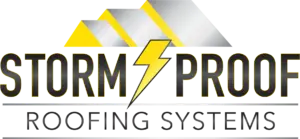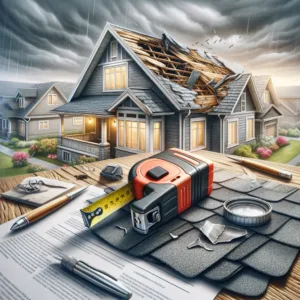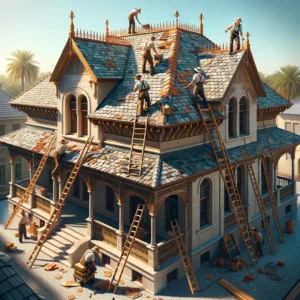Roofs are often overlooked when it comes to regular maintenance and inspection, yet they play a crucial role in protecting our homes from the elements. Neglecting proper care of your roof can lead to costly repairs and even compromise the safety and integrity of your entire house. This is why it is vital to understand the importance of roof maintenance and inspection.
The Importance of Roof Maintenance and Inspection
Roofs endure relentless exposure to harsh weather conditions, including heavy rain, snow, intense heat, and strong winds. Over time, these elements take their toll on the roof’s materials, gradually wearing them down.
Regular roof maintenance allows homeowners to identify potential problems before they escalate into major issues. A well-maintained roof not only extends its lifespan but also prevents roof leaks that can damage interior structures such as ceilings, walls, insulation, and electrical systems.
Additionally, a neglected or damaged roof can result in energy inefficiency as air may escape or enter through gaps or cracks. By performing routine inspections and promptly addressing any issues found, homeowners can save themselves from expensive repairs down the line.
Hidden Damage: The Silent Threat to Your Roof's Integrity
While some roofing problems are apparent – such as missing shingles after a storm – others remain concealed until they develop into significant concerns. Hidden damage is like an insidious threat lurking beneath the surface; it weakens your roof’s structure without you even realizing it. Weather-related damage is one common type of hidden damage that occurs gradually over time due to exposure to extreme weather conditions.
Hailstorms can cause dents on shingles or dislodge granules that protect them from UV radiation. Wind gusts may lift or blow off shingles altogether, leaving vulnerable areas exposed to rain infiltration.
In addition to weather-related damage, structural issues can also go unnoticed until it’s too late. A sagging roof, for instance, indicates weakened support structures and calls for immediate attention.
Rotted decking, often caused by water leaks or moisture buildup, can compromise the stability of your roof. Pest infestation is another hidden threat that frequently goes undetected.
Woodpeckers may create holes in your roof, causing damage that mimics natural wear and tear. Termites or carpenter ants may silently tunnel through wood structures, compromising your roof’s integrity over time.
Now that we understand the importance of regular maintenance and the hidden dangers that can undermine a seemingly intact roof, it is crucial to delve deeper into recognizing these types of hidden damages through thorough inspections. By doing so, homeowners can take early action to prevent further deterioration and safeguard their homes from potential disasters.
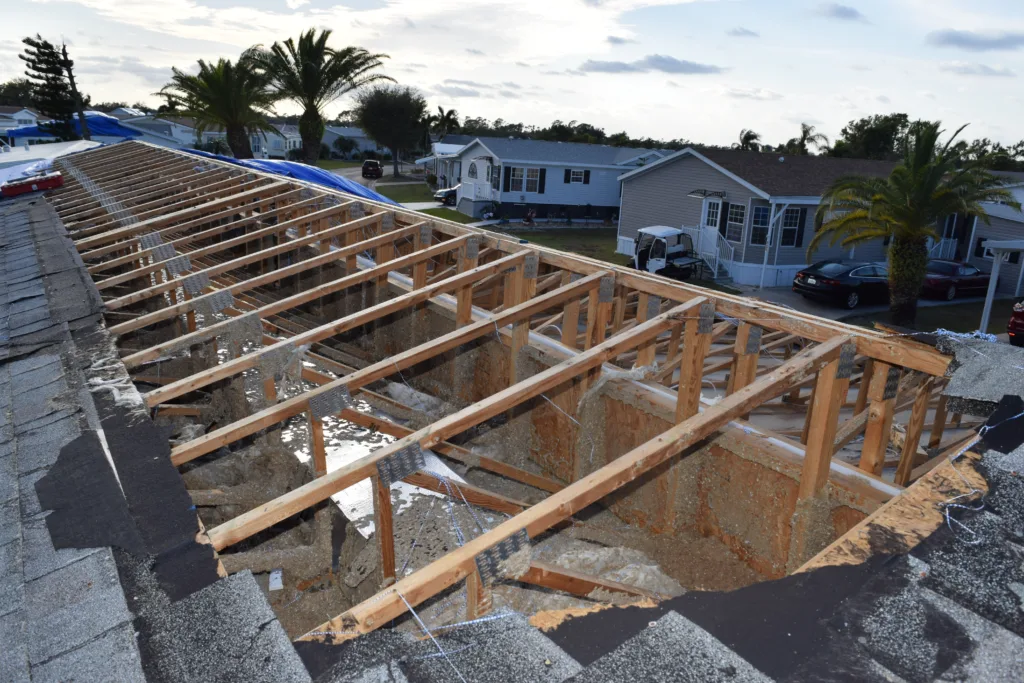
Understanding Common Types of Hidden Roof Damage
When it comes to weather-related damage, hailstorms are one of the most significant threats to your roof’s integrity. Identifying signs of hail damage is crucial for timely repairs.
Look for dents on the shingles, which may appear as small depressions or circular areas where granules are missing or displaced. These dents weaken the shingle’s protective layer, making it more susceptible to leaks and further deterioration over time.
Another common weather-related issue is wind damage, which can occur during severe storms. Inspect your roof for lifted or missing shingles after a strong gusty event.
Raised shingles disrupt the water shedding process, leaving your roof vulnerable to water infiltration and subsequent damage. If you notice exposed patches where shingles have completely gone missing, immediate repair or replacement is necessary to prevent further complications.
An often underestimated weather-induced problem is ice damming, which occurs during freezing temperatures when snow melts on the warm upper part of the roof but refreezes at its colder edges. This leads to ice buildup and blocks proper drainage.
Signs of ice damming include icicles hanging from the eaves and water stains on walls or ceilings inside your home. If left unaddressed, this can lead to water infiltration, compromising both the structural integrity and insulation effectiveness of your roof.
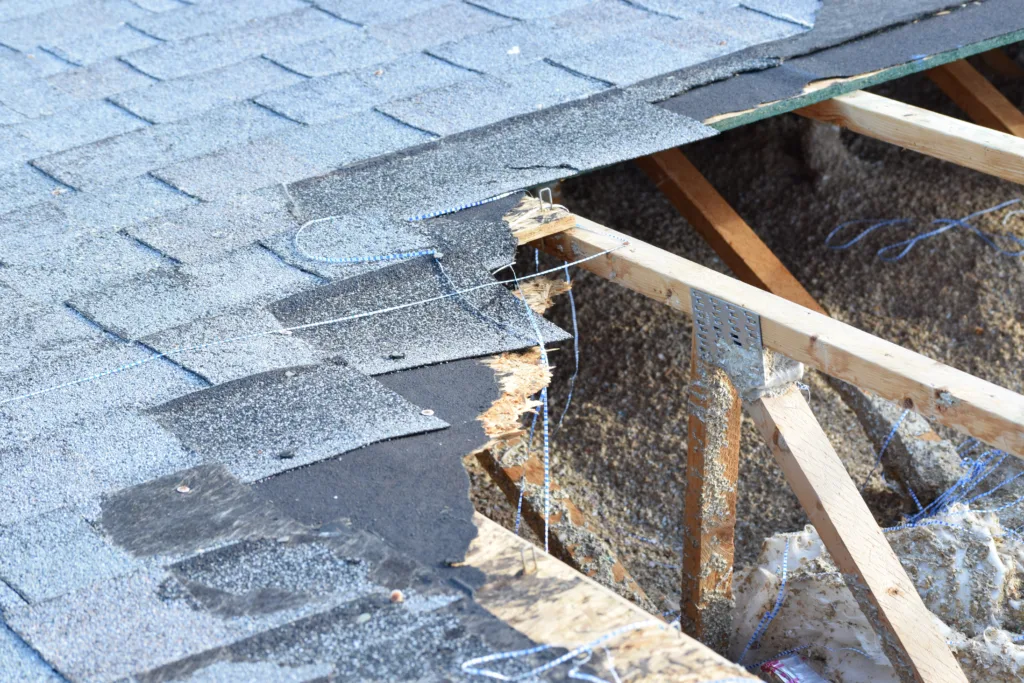
Structural damage
A sagging roof is an alarming indication of weakened support structures that require immediate attention from a professional roofer. It can result from excessive weight due to aging or deteriorating materials causing rafters or trusses to bend under pressure. Look out for visible sagging areas in your attic or changes in the shape of your roofline when viewed from outside.
Rotted decking is another form of structural damage that must not be ignored. It occurs when the plywood or OSB (oriented strand board) beneath your shingles begins to decay due to moisture infiltration, often caused by faulty flashing or failed waterproofing layers.
To identify soft spots or discoloration on your decking, venture into your attic and carefully inspect the underside of your roof. Any signs of water damage should be addressed promptly.
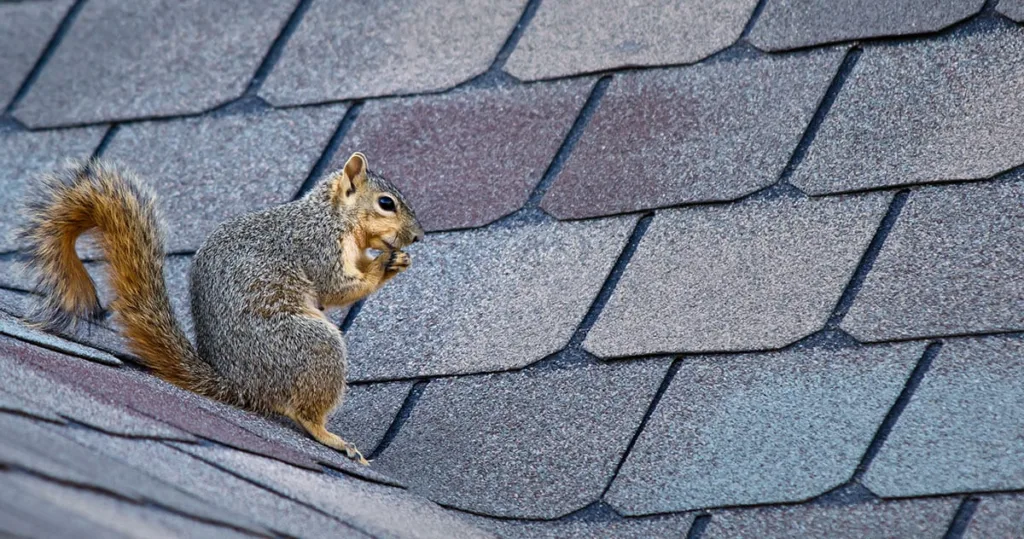
Pest infestation damage
Woodpecker holes on your roof can create more than just an annoying noise; they can compromise its integrity as well. These holes are typically larger, irregularly shaped, and have rough edges compared to natural openings like vents or chimneys. If you suspect woodpecker activity, it is crucial to determine whether the holes are active or abandoned.
Active holes will have fresh wood chips nearby and may still emit a faint odor. Termite or carpenter ant activity is another concern when it comes to hidden roof damage caused by pests.
These insects often tunnel through wooden structures, including decking and rafters, weakening them from within. Signs of termite or carpenter ant infestation include small holes with piles of sawdust-like frass nearby and audible tapping noises coming from within the walls or ceilings.
Remember that understanding these common types of hidden roof damage is the first step in preventing further deterioration and costly repairs. Regular inspections combined with timely maintenance can help safeguard the structural integrity of your roof for years to come.

Exterior Inspection: Preserving the First Line of Defense
When it comes to safeguarding your roof, examining the exterior is paramount. Begin by scrutinizing the shingles for any visible signs of damage. Look out for cracks, which can compromise their functionality and allow water infiltration.
Additionally, keep an eye on curling or blistering shingles, as they indicate issues with adhesion or excessive heat exposure. These deformities can weaken your roof’s ability to withstand harsh weather conditions.
Another crucial aspect of the exterior inspection is checking the flashing around chimneys, vents, and skylights. Flashings are metal strips installed to prevent water penetration at vulnerable areas where the roof meets other structures.
Inspect them closely for gaps or corrosion; if you notice any defects, it could mean that moisture has seeped through these gaps and may be causing hidden damage beneath the surface. Promptly addressing these issues will help maintain your roof’s integrity.
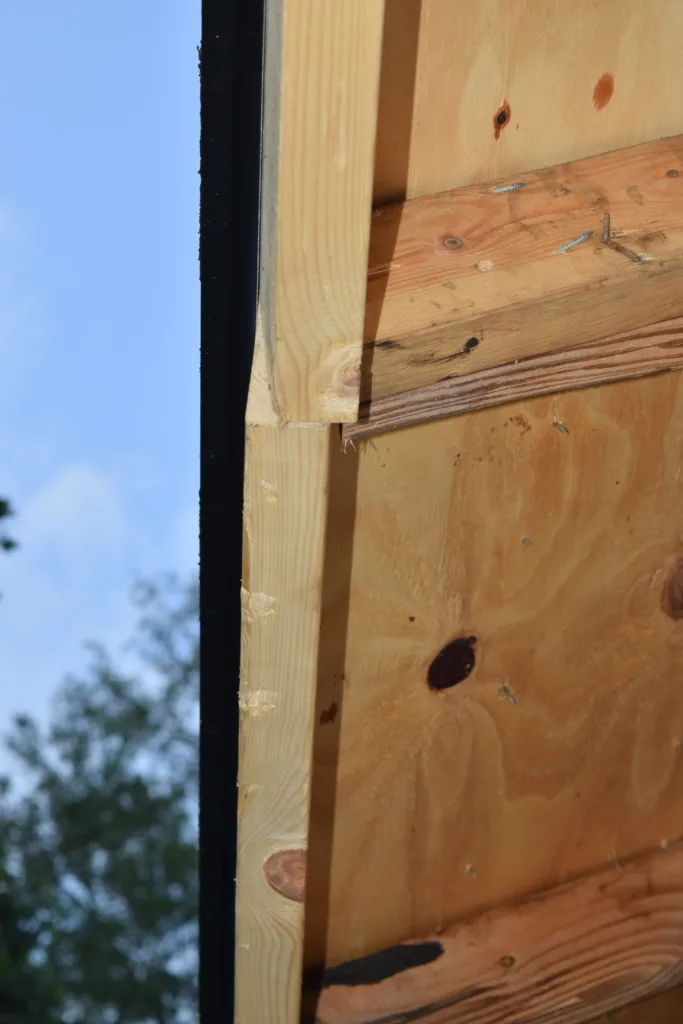
Interior Inspection: Uncovering Signs of Trouble
While exterior inspections are vital, don’t overlook the interior assessment of your roof as it reveals hidden problems that may otherwise go unnoticed until extensive damage occurs. Start by carefully examining ceilings and walls for water stains or discoloration.
These visual cues often indicate leaks originating from a damaged roof or compromised flashing. Pay attention to areas directly below chimneys, vents, skylights, or any other potential entry points for water.
In addition to water stains, be vigilant in spotting signs of mold growth or musty odors in attics or upper-level rooms – both indicators of excess moisture caused by hidden leaks or inadequate ventilation within your roofing system. Identifying these warning signs early on allows you to address underlying issues promptly and mitigate further damage.
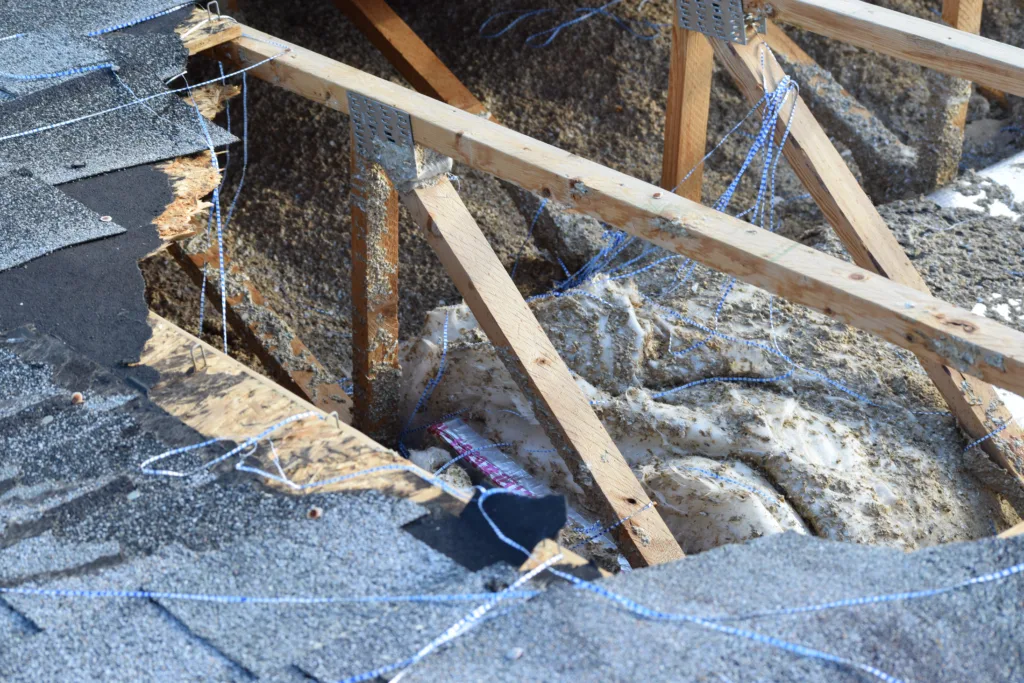
Why Roof Inspections Are A Must
A thorough roof inspection is an essential part of maintaining the longevity and structural integrity of your home. By regularly inspecting both the exterior and interior, you can identify hidden damage and address it before it escalates into costly repairs or replacements. Remember to check for cracks, curling, or blistering shingles on the outside, while also examining flashing for gaps or corrosion.
Internally, be vigilant in identifying water stains on ceilings and walls as well as indications of mold growth or musty odors in attics. By staying proactive and addressing issues promptly, you not only safeguard your investment but also ensure the safety and comfort of your home for years to come.
Identifying Hidden Damage on Your Roof
Hidden damage on your roof is insidious because it often goes unnoticed until it becomes a significant problem. Regular inspections by certified professionals can help identify issues like underlayment failures, shingle deterioration, or subtle leaks that may not be visible from the ground.
Hidden Signs of a Roof Leak
A roof leak may not always present with a drip. Look for mold growth, water stains on ceilings, peeling paint, or an unexplained musty odor. It’s essential to schedule an inspection if you notice any of these signs.
Is Roof Damage Covered Under Homeowners Insurance?
Generally, homeowners insurance covers roof damage that is sudden and accidental, like hail or storm damage. However, wear and tear or poor maintenance are typically not covered. It’s wise to review your policy or contact your insurance for clarification.
Is Hidden Water Damage Covered by Insurance?
Most policies cover water damage if it’s the result of a sudden incident. However, if the water damage is due to neglect or lack of maintenance, insurance may not cover it. Always check with your provider and consider routine maintenance to prevent such issues.
Can You Damage the Roof of Your Mouth?
While not related to home roofing, it’s worth noting that you can indeed damage the roof of your mouth through burns or trauma from hard foods. If this occurs, soft foods and over-the-counter remedies can help in healing.
Can You Damage Your Roof by Walking on It?
Yes, walking on your roof can potentially cause damage. Improper foot traffic can dislodge or break shingles, especially in hot weather when they are more pliable. It’s best to leave roof walking to the professionals with proper safety gear and expertise.
